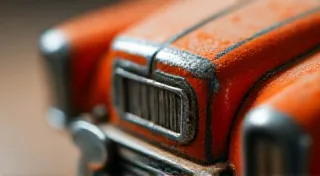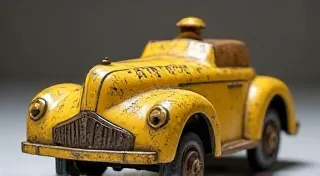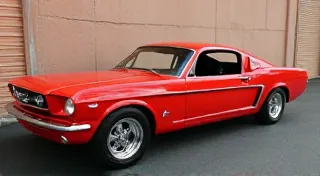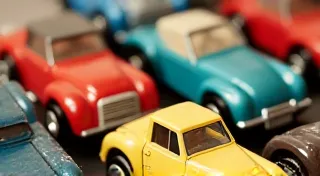Identifying and Dating Early Tinplate Toy Cars
The world of vintage toy cars is a fascinating one, filled with history, artistry, and the thrill of the hunt. For collectors, accurately identifying and dating these miniature treasures is paramount – it impacts value, historical significance, and simply the satisfaction of knowing the story behind your collection. This article focuses on early tinplate toy cars, a particularly popular and intricate area of toy car collecting, and delves into the key factors that help determine their age and origin.
What is Tinplate?
Before diving into identification, understanding the material itself is crucial. “Tinplate” refers to thin sheets of iron or steel coated with tin. This coating provided a rust-resistant surface suitable for mass production and vibrant paint applications, making it the go-to material for many toy car manufacturers from the late 19th century through the mid-20th century. The relative affordability and ease of working with tinplate allowed for complex shapes and designs to be produced relatively quickly and at lower costs compared to earlier materials like cast iron or wood. The transition from heavier materials to tinplate fundamentally changed the landscape of toy production, enabling greater detail and more intricate designs, a shift that’s also explored in greater detail when considering the broader evolution of toy construction – a topic reminiscent of the detailed examination we see when exploring the history of cast iron toy cars, a predecessor to the tinplate era.

Markings: The First Clue
Markings are the most direct – though not always definitive – indicator of a toy car's origin and age. Early manufacturers often stamped their names, model numbers, or patent dates directly onto the tinplate. These markings can be found on the base, roof, wheels, or even hidden areas within the car's construction.
- Early Makers: Look for markings from companies like Bing (Germany), Märklin (Germany), Doll (Germany), Chadwick (England), and George Horrocks (England). Early Bing cars often have "Bing" clearly stamped, while Märklin cars may have "Märklin" or just "M" followed by a model number. Chadwick cars are known for their distinctive “Chadwick” mark.
- Patent Dates: Many toy cars were patented, and these patent dates can provide a precise starting point for the car’s production date. Remember that patent dates don't necessarily equate to the *end* of production, but they establish a lower bound.
- Model Numbers: Model numbers are essential for identifying specific variations of a car. However, manufacturers often reused model numbers across different eras, so a model number alone isn’t always enough.
- "Made in..." Markings: Later markings often included “Made in Germany,” “Made in USA,” or similar indications, providing clues about the country of origin. The absence of such markings on older cars is a strong indicator of their age.
- Erasure and Repainting: Be aware that markings can sometimes be worn away or intentionally erased during restoration attempts. Look for subtle signs of previous markings - faint outlines or inconsistencies in the paint.
Construction Details: A Deeper Dive
Beyond markings, a car's construction methods offer invaluable insights into its age. Manufacturing techniques evolved significantly over time. The evolution of these techniques is far-reaching, echoing the broader impact of changing societal tastes and manufacturing capabilities that shaped collectible vehicles, much like the insights derived from examining Hot Wheels Redlines collecting, which demonstrates the impact of design and production on a more modern toy car phenomenon.
- Early Construction (1880s-1910s): Early cars were often made from thicker tinplate and used relatively simple construction methods. Look for hand-soldered seams and less refined paint application. Wheels were frequently metal, often with a simple rivet-attached axle. Braking systems were rare, and suspension was nonexistent.
- Pressed Wheels: Early pressed wheels were often crudely stamped and hand-finished. Later wheels were more precisely pressed and often featured rubber tires (a significant advancement).
- Wind-up Mechanisms: The sophistication of the wind-up mechanism itself is a revealing detail. Early mechanisms were often basic and visible, while later ones were more enclosed and refined.
- Paint Application: Early paint jobs were often uneven and prone to chipping. Later cars boasted smoother, more durable paint finishes, often with multiple layers.
- Spring Suspension: The introduction of spring suspension was a major leap in toy car design, improving ride quality. Spring suspension became more common starting in the 1920s.
- Braking Systems: Simple braking systems started appearing in the early 20th century, offering more control for young drivers.
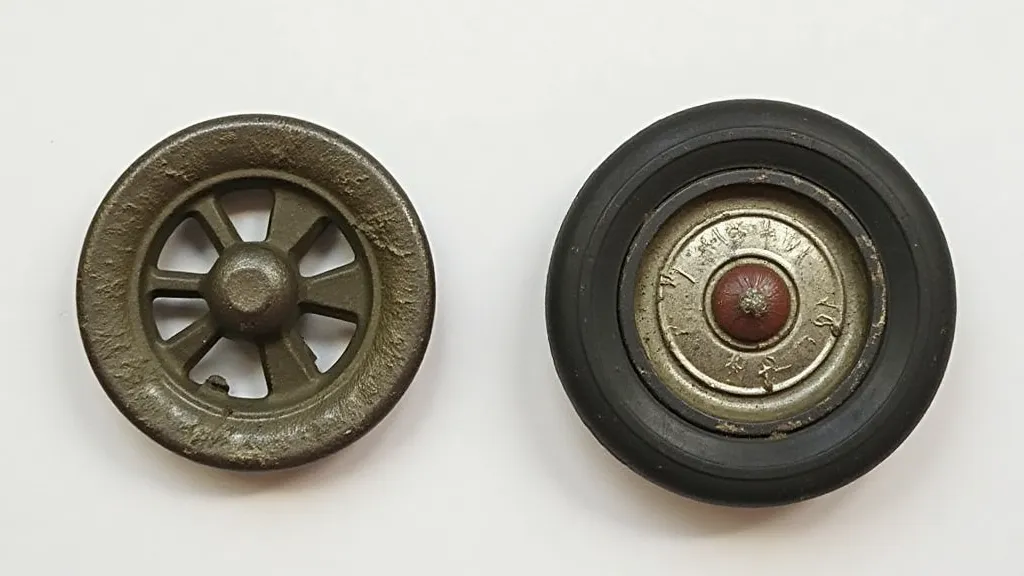
Unique Features and Design Trends
Toy car design followed broader trends in automotive styling. Recognizing these stylistic cues can help narrow down the possible age range. These reflections of real-world automotive trends also serve as a mirror to the evolving cultural landscape – a theme echoed by those who study miniature automobilia, which offers a unique perspective on societal shifts, as explored in "The Obsidian Mirror".
- Early Designs (1890s-1910s): Early cars often replicated open-top vehicles popular at the time, such as runabouts and touring cars. Designs were often whimsical and cartoonish.
- The 1920s and 1930s: The rise of closed-body cars in the real world influenced toy car design. Cars began to resemble passenger cars, sedans, and coupes.
- Streamlining (1930s-1940s): The streamlining craze of the 1930s and 1940s impacted toy car styling. Designs became more aerodynamic, with rounded edges and flowing lines.
- Post-War Designs (1950s): The post-war era saw a return to more traditional styling cues, though with a renewed focus on bright colors and elaborate details.
Common Mistakes and Pitfalls
Identifying and dating vintage toy cars isn't always straightforward. Here are some common pitfalls to avoid:
- Restoration and Alterations: Heavily restored cars can be misleading. Restorations may obscure original markings or construction details.
- Reproduction Cars: Reproduction cars of classic toy cars are becoming increasingly common. Reproductions often mimic the appearance of originals but lack the quality and construction of true vintage cars. Determining authenticity can be challenging, requiring close examination of materials and construction techniques, much like the meticulous attention to detail needed when assessing collectibles across a wide variety of fields.
- Confusing Model Numbers: As mentioned earlier, model numbers can be reused, so relying solely on the model number is risky.
- Misinterpreting Markings: Be aware that markings can be incomplete or obscured.
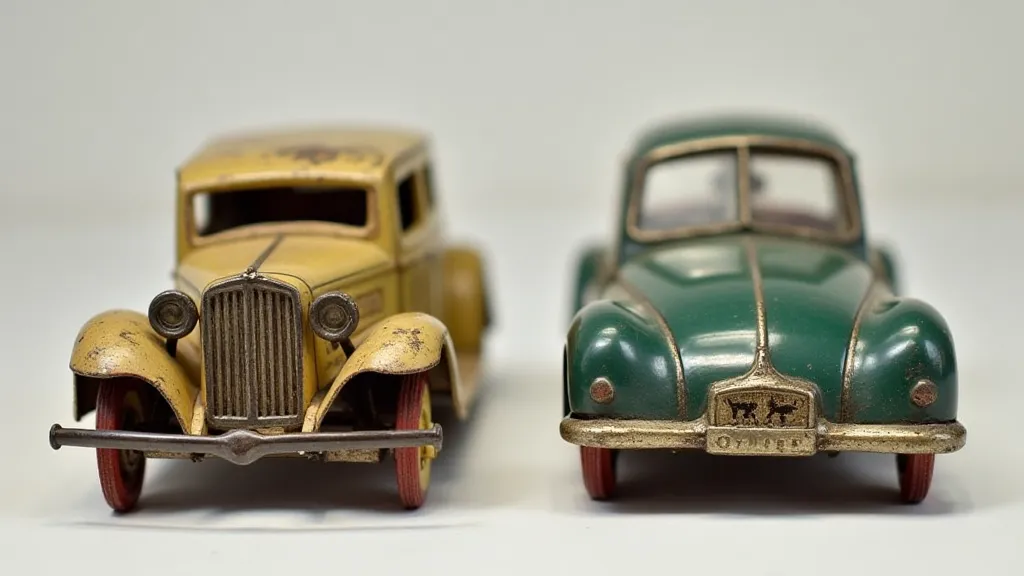
Resources and Further Research
The world of vintage toy cars is vast and complex. Continued research and exploration are essential for any serious collector. Preserving these pieces requires not only knowledge but also careful handling and restoration, subjects explored in detail in "Restoring Vintage Toy Cars".
- Books: Many excellent books detail the history and identification of vintage toy cars.
- Online Forums: Online forums dedicated to toy car collecting offer a wealth of information and expert opinions.
- Auction Sites: Observing prices and descriptions on auction sites can provide valuable insights into the market.
- Museums: Visiting toy car museums can offer a firsthand look at rare and historically significant vehicles.
By combining careful observation, meticulous research, and a healthy dose of skepticism, you can confidently identify and date your early tinplate toy cars and unlock the fascinating stories they hold.


